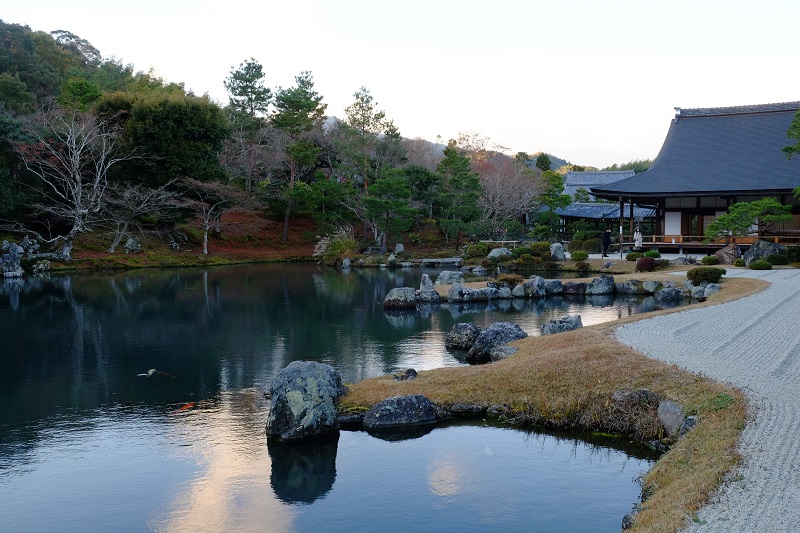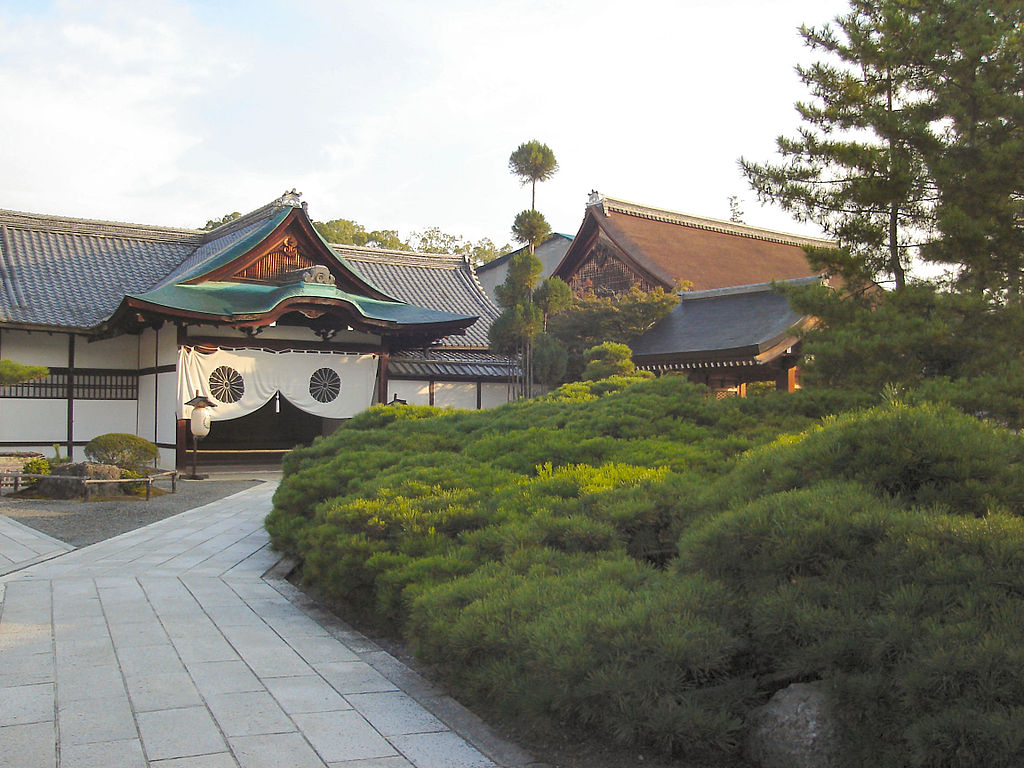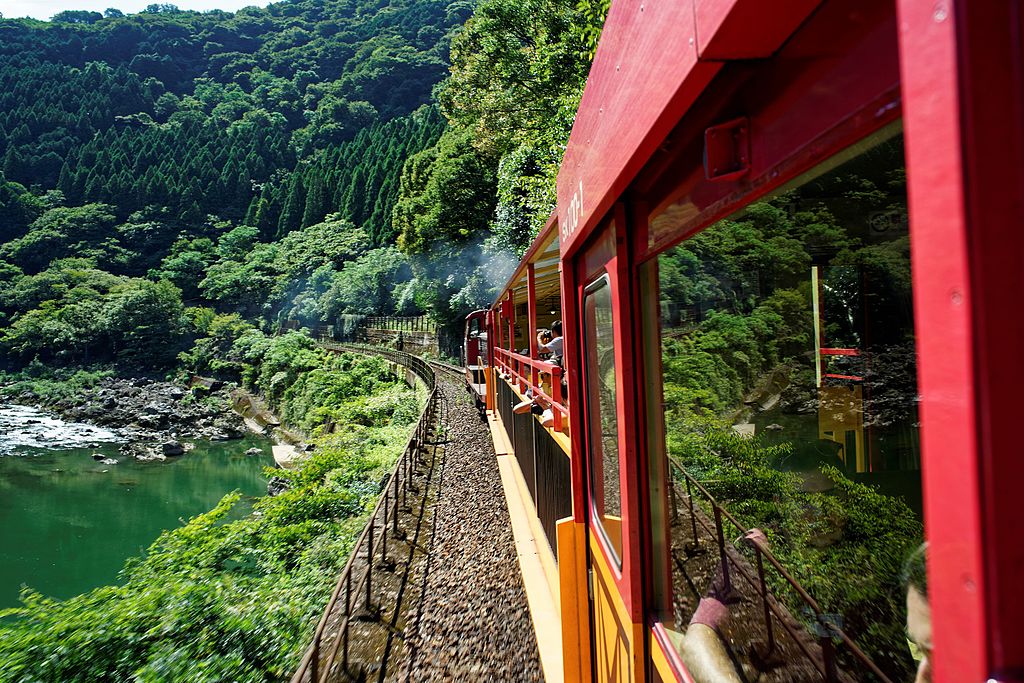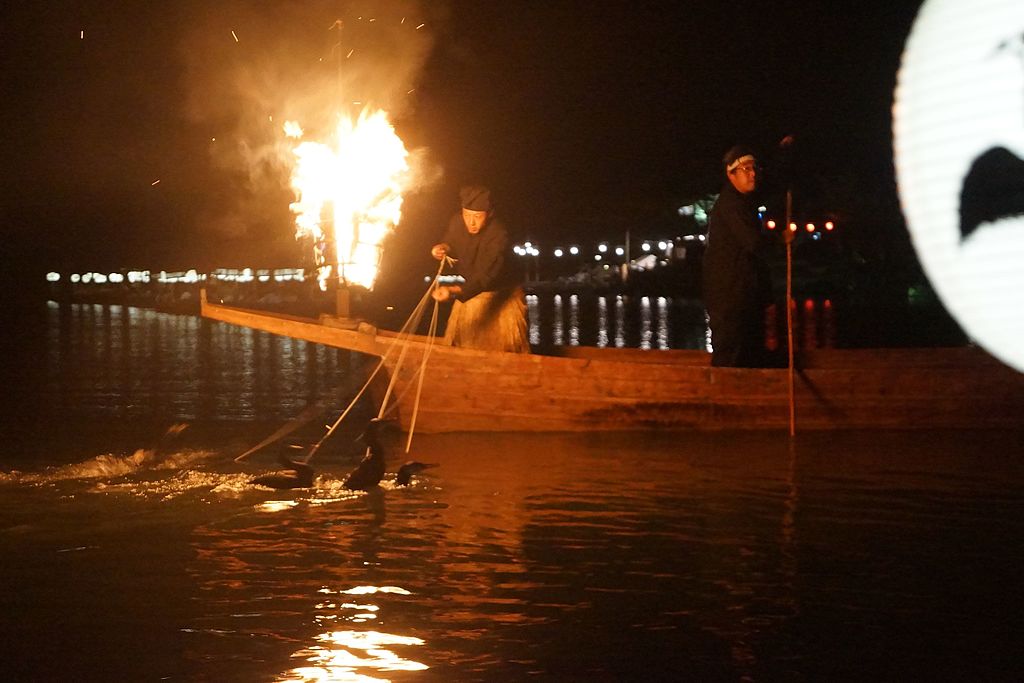What to do in western Kyoto and Arashiyama
The western part of Kyoto is characterised by forests, temples and the Hozu River. It is also home to the famous bamboo forest.
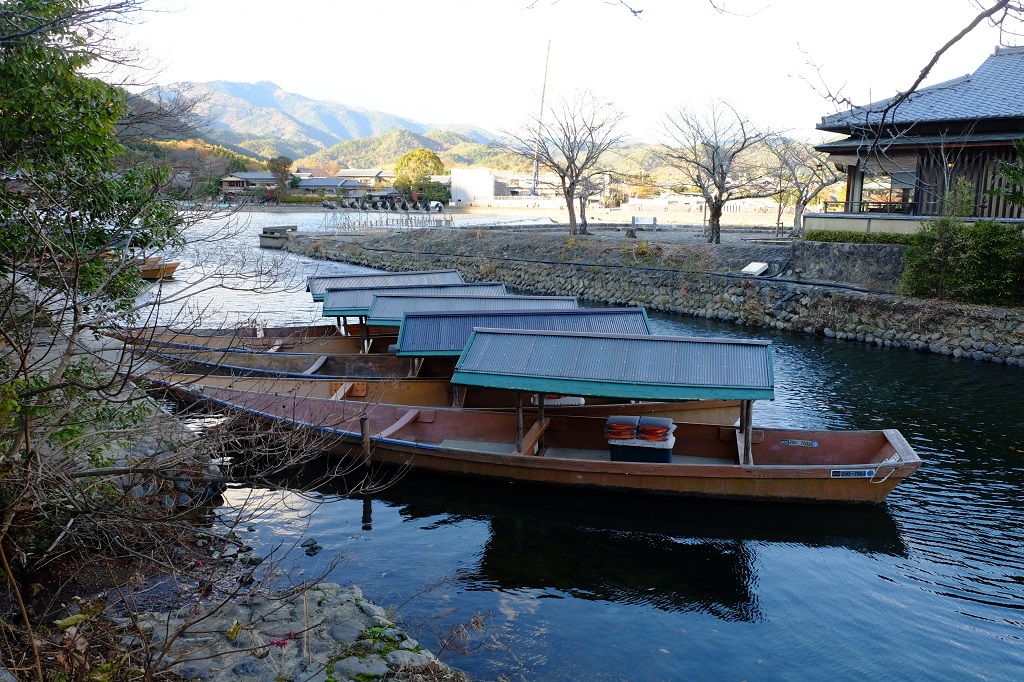
Photo by Japanforeveryone.com
Saihoji Temple, commonly known as Kokedera or ‘Moss Temple’, is a hidden gem located in the charming Arashiyama district of Kyoto, Japan. This ancient Buddhist temple is famous for its beautiful moss-covered gardens, which create a magical and tranquil atmosphere. Additional highlights of the Kokedera include a pond with water lilies and a pavilion dedicated to the temple’s founder. However, visiting the Kokedera requires advance booking as only a limited number of visitors are admitted each day, making the experience even more exclusive and special.
Yanajin33, CC BY-SA 3.0, via Wikimedia Commons
Practical information
| Show location on Google Maps | |
| Official website |
|
| Reservation page | |
| 14 August, 30 and 31 December | |
| 4000 Yen (minimum age for admission 12 years) + 110 Yen for online booking | |
| 20 minutes’ walk from Matsuo Station of the Hankyu Arashiyama line. Arrive at Shijo Station (K09) or the Shijo Karasuma bus (lines 5, 8, 11, 12, 26, 32, 46, 91, 101, 201, 203, 207). From here transfer to the Karasuma station of the Hankyu. Take the train to Katsura Station. Here change trains and get off at Matsuo Station. From Karasuma Station to Matsuo Station takes 30 minutes by train, cost 430 yen |
The Katsura Imperial Villa, also known as Katsura Rikyu, is an architectural gem located in the Arashiyama district of Kyoto, Japan. Built in the 17th century, this beautiful residence is an example of refined Japanese architecture and landscaping. The villa is surrounded by beautiful gardens, lakes and bridges, creating an atmosphere of tranquillity and natural beauty. The interior of the villa features beautiful tea rooms and inlaid wooden floors, reflecting the elegance and aesthetic taste of the era. The Katsura Imperial Villa is a unique place to immerse yourself in the grandeur of Japanese architecture and culture.
Raphael Azevedo Franca, Public domain, via Wikimedia Commons
Practical information
| Show location on Google Maps | |
| Official website |
|
| Sundays, public holidays and many Saturdays | |
| Free It is necessary to book the guided tour at the Imperial Palace office Reservations can be made on the official website |
|
| 15 minutes’ walk from Katsura Station on the Kyoto line of the Hankyu Arrive at Shijo Station (K09) or the Shijo Karasuma bus (lines 5, 8, 11, 12, 26, 32, 46, 91, 101, 201, 203, 207). From here transfer to the Karasuma station of the Hankyu. Take the train to Katsura Station Take bus 33 from the station and get off at the Katsura Rikyu-mae stop |
Yoshiminedera is an ancient Buddhist temple located in the charming Arashiyama district of Kyoto, Japan. Founded in 1029, the temple offers spectacular views of the surrounding valley and mountain forests. Yoshiminedera’s highlight is its rhododendron garden, which transforms into a sea of pink and purple flowers in spring. The temple has a rich history of religious and spiritual traditions and is an ideal place for meditation and contemplation. Visitors can also enjoy a peaceful walk along the paths leading to the temple, admiring the beauty of the surrounding landscape.
663highland, CC BY-SA 3.0, via Wikimedia Commons
Practical information
| Show location on Google Maps | |
| Official website |
|
| 8:30-17:00 (Saturday, Sunday and public holidays opening at 8:00) Last entry at 16:45 |
|
| No closing days | |
| 500 Yen | |
| Get off at Mukomachi station on the JR Kyoto Line or Higashi-Muko station on the Hankyu Kyoto Line. From here take bus number 66 (30 minutes, 340 yen) In January and February the bus only goes as far as Jurinji Temple, about 1.5 km from Yoshiminedera Temple Kyoto bus pass are not valid. |
Tenryuji Temple is an ancient temple located in the Arashiyama district of Kyoto, Japan. Founded in the 14th century, the temple has been damaged and rebuilt several times, but its beauty and historical importance have remained intact. The temple offers a vast green area with gardens and bamboo groves, creating an atmosphere of peace and tranquillity. One of the highlights of Tenryuji Temple is its Zen garden, considered one of the best in Japan. The temple also houses a museum with works of art and cultural treasures, representing an important heritage of Japanese culture.
Photo by Japanforeveryone.com
Practical information
| Show location on Google Maps | |
| Official website |
|
| 8:30-17:00 Last entry at 16:50 |
|
| No closing days | |
| 500 Yen for the gardens, another 300 Yen to enter the buildings | |
| 5 minutes’ walk from Arashiyama Station on the Keifuku Arashiyama line 10 minutes’ walk from JR Saga Arashiyama station 5 minutes’ walk from Arashiyama Tenryuji-mae bus stop (lines 11, 28 and 93) |
Daikakuji Temple is an important Buddhist shrine located in the Arashiyama district of Kyoto, Japan. Founded in the 8th century, this temple is known for its architectural beauty and fascinating history. Its vast gardens are a place of great serenity, with tranquil lakes, picturesque bridges and groves of ancient trees. One of Daikakuji’s most famous attractions is the imposing main hall, with its intricate details and magnificent frescoes. The temple is also associated with Empress Komei, who frequented it as a place of prayer and spiritual retreat.
PlusMinus, CC BY-SA 3.0, via Wikimedia Commons
Practical information
| Show location on Google Maps | |
| Official website |
|
| 9:00-17:00 (last entrance for the garden at 16:30) | |
| No closing days | |
| 500 Yen (temple) 300 Yen (Owada pond garden) |
|
| 15 minutes’ walk from Saga-Arashiyama station on the JR Sagano line (train from Kyoto station) Daikakuji bus stop (lines 28 and 91) |
Jojakkoji Temple
The Jojakkoji temple, located in the Arashiyama district of Kyoto, Japan, is a hidden treasure of beauty and spirituality. Founded in the 14th century, this ancient temple offers breathtaking views of the city and surrounding mountains. The temple is famous for its landscaped gardens, with extensive bamboo groves and ancient trees, which create an atmosphere of tranquillity and contemplation. One of the highlights of Jojakkoji is its distinctive three-tiered tower, which stands majestically and offers incredible panoramic views. The temple is an ideal place for a visit immersed in spirituality and nature.
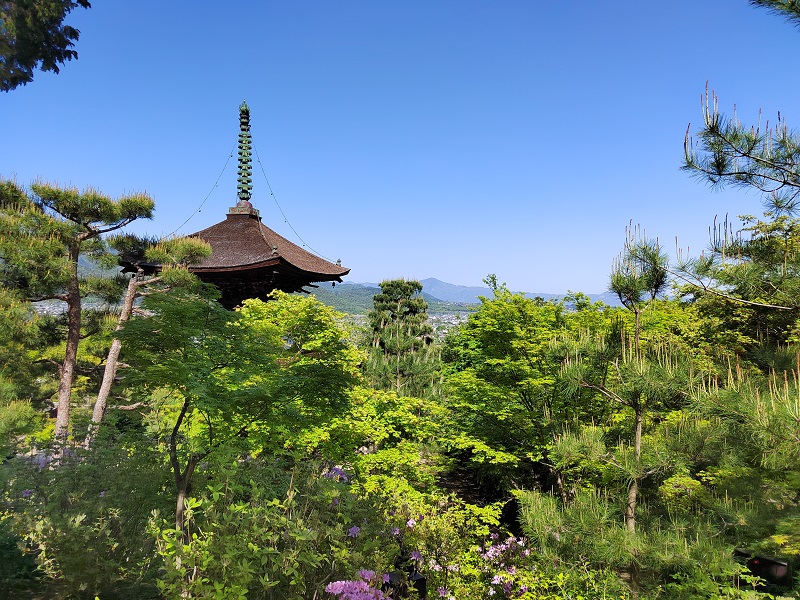
Photo by Japanforeveryone.com
Practical information
| Show location on Google Maps | |
| Official website |
|
| 9:00-17:00 (last entry at 16:30) | |
| No closing days | |
| 500 Yen | |
| 15 minutes’ walk from Torokko Arashiyama Station (Saga Scenic Line) |
Nisonin Temple
The Nisonin temple, located in the Arashiyama district of Kyoto, Japan, is a place of great spiritual importance and beauty. Founded in the 9th century, this Buddhist temple is distinguished by its traditional architecture and spectacular gardens. The Nisonin is famous for its large central hall, decorated with majestic golden statues of Buddha. Its gardens are an oasis of serenity, with ponds, groves of trees and beautiful flowers. Visitors can stroll among the Buddhist sculptures and meditate in an atmosphere of peace and tranquillity. The Nisonin temple is a cultural gem not to be missed.
663highland, CC BY-SA 3.0, via Wikimedia Commons
Practical information
| Show location on Google Maps | |
| Official website |
|
| 9:00-16:30 | |
| No closing days | |
| 500 Yen | |
| 20 minutes’ walk from Torokko Arashiyama Station (Saga Scenic Line) |
Temple Gioji
The Gioji Temple is a small and impressive temple located in the Arashiyama district of Kyoto, Japan. The temple was founded in 1400 and is famous for its beautifully landscaped gardens with small ponds, stone bridges and natural rockeries. The temple is often described as a picturesque and romantic place, ideal for an evening stroll or to relax in nature. The temple’s small main hall, with its rice-thatched ceiling and traditional carpets, also offers a unique spiritual experience, reflecting Japanese history and tradition.
Andreas Tack, Public domain, via Wikimedia Commons
Practical information
| Show location on Google Maps | |
| Official website |
|
| 9:00-17:00 (last entry at 16:30) | |
| No closing days | |
| 300 Yen | |
| 25 minutes’ north-west walk from Torokko Arashiyama station (Saga scenic line) |
Adashino Nenbutsuji Temple
The Adashino Nenbutsuji temple, located in the Arashiyama area of Kyoto, is a place steeped in history and spirituality. Founded in the 9th century, this Buddhist temple is known for its beautiful Jizo garden, a collection of over 8,000 stone statues representing the souls of the dead. These statues, carefully arranged among trees and gravel paths, create a mystical and contemplative atmosphere. During the Adashino Nenbutsuji festival of lights, the statues are illuminated, creating a magical spectacle. A place of peace and reflection, the Adashino Nenbutsuji temple is a must-see for visitors to Arashiyama.
Daderot, CC0, via Wikimedia Commons
Practical information
| Show location on Google Maps | |
| Official website |
|
| 9:00-17:00 (until 16:00 from December to February) Last admission 30 minutes before closing |
|
| No closing days | |
| 500 Yen | |
| 20 minutes’ walk from the Saga Shakadomae bus stop (routes 28 and 91) |
Tempio Otagi Nenbutsuji
The Otagi Nenbutsuji temple is a hidden gem in Arashiyama district, Kyoto. This Buddhist temple, founded in 1922, is famous for its 1200 stone portraits called ‘rakan’. Each portrait is unique and represents a different human expression, creating an incredible mix of serenity and fun. Visitors can wander among these striking figures, discovering awkward or smiling expressions. The Otagi Nenbutsuji temple also offers a panoramic view of the city of Kyoto and the surrounding mountains, making it a place of rare beauty and spirituality not to be missed by visitors to Arashiyama.
663highland, CC BY-SA 3.0, via Wikimedia Commons
Practical information
| Show location on Google Maps | |
| Official website |
|
| 8:00-16:30 | |
| No closing days | |
| 300 Yen Free for under 15s |
|
| 30 minutes’ walk from the Saga Shakadomae bus stop (routes 28 and 91) |
Togetsukyo Bridge
The Togetsukyo Bridge, located in Kyoto’s Arashiyama district, is one of the city’s most iconic landmarks. Built in the 13th century, this wooden bridge spans the Katsura River and is surrounded by beautiful panoramic views. Its name, meaning ‘to cross the moon’, evokes the poetic and romantic feeling one gets from walking across it. The Togetsukyo Bridge also offers a breathtaking view of the surrounding mountains, especially during the autumn season when the leaves change colour. It is a popular spot with tourists and visitors, who can enjoy an unforgettable walk in the heart of Arashiyama.
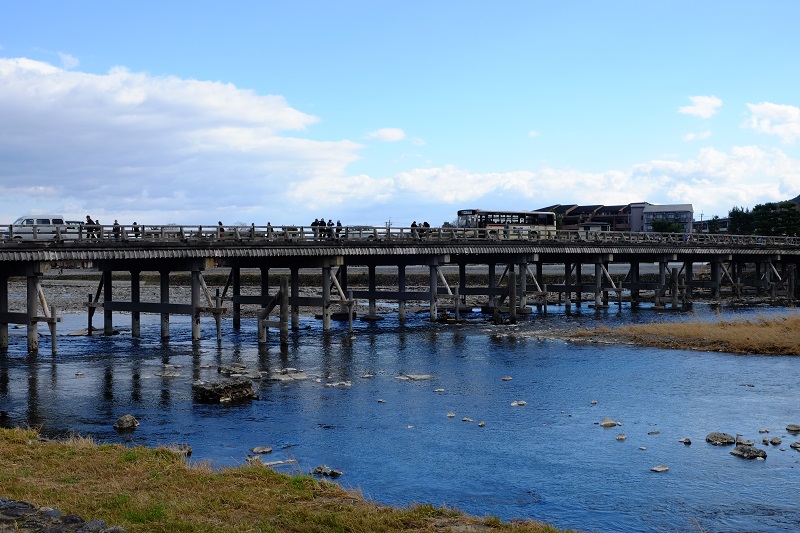
Photo by Japanforeveryone.com
Practical information
| Show location on Google Maps | |
| 5 minutes’ walk from Keifuku Arashiyama Station 15 minutes’ walk from JR Saga-Arashiyama Station 5 minutes’ walk from Arashiyama bus stop (lines 11, 93) |
Bamboo forest
The bamboo forest in Arashiyama is a magical place that enchants visitors with its surreal beauty. This forest, located at the foot of the mountains, is famous for its tall, slender bamboo trees that create an ethereal atmosphere. Walking along the long paths surrounded by these majestic plants is a unique experience that fills the soul with serenity. During the autumn season, when the leaves change colour, the bamboo forest becomes even more spectacular. No wonder this fascinating place has become one of the icons of Arashiyama and one of the most photographed places in Kyoto.
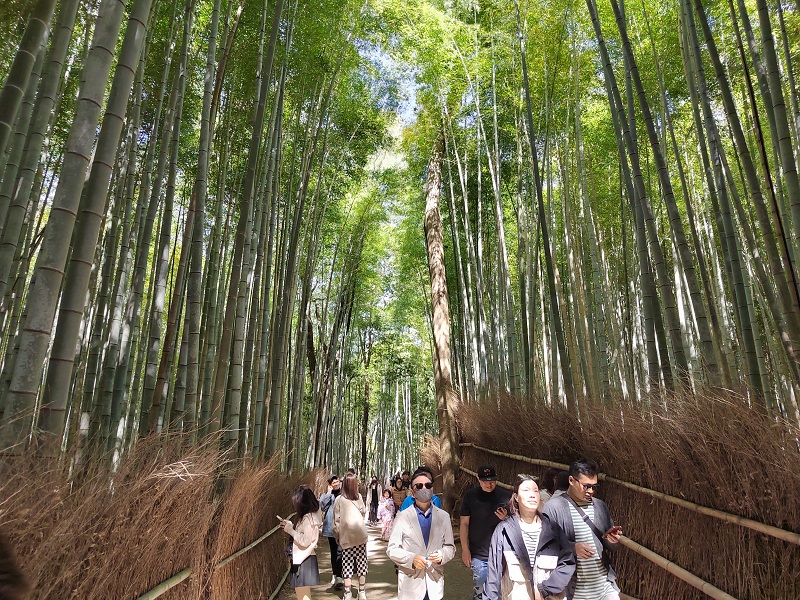
Photo by Japanforeveryone.com
Practical information
| Show location on Google Maps | |
| 5 minutes’ walk from Keifuku Arashiyama Station 15 minutes’ walk from JR Saga-Arashiyama Station 5 minutes’ walk from Arashiyama Tenryuji-mae bus stop (lines 11, 28, 93) |
Villa Okochi Sanso
The Okochi Sanso Villa in Arashiyama is a perfect example of Japanese art and architecture in symbiosis with nature. The villa, built in 1920, was the residence of a famous actor who used it as a source of inspiration. The villa is home to several traditional Japanese gardens that wind through bridges, streams, waterfalls and tea pavilions. Each garden has a unique feature, such as the ship-shaped garden. The trees, plants and flowers follow one another in a riot of colours and scents that helps to achieve a moment of peace and tranquillity. The Okochi Sanso Villa is a hidden gem of Arashiyama and a must-see for lovers of nature and traditional Japanese art.
user:Hiroyuki0904, Public domain, via Wikimedia Commons
Practical information
| Show location on Google Maps | |
| 9:00-17:00 | |
| No closing days | |
| 1000 Yen | |
| 5 minutes’ walk from Torokko Arashiyama Station (Sagano Scenic Line) |
Iwatayama Monkey Park
The Iwatayama Monkey Park in Arashiyama is a perfect place to get close to the local wildlife. Located on top of the mountain, the park offers an incredible view of the city of Kyoto. But what makes this place so special is the presence of Japanese macaque monkeys living in the wild within the fenced area. Here, visitors can feed the monkeys, interact with them and learn more about their daily lives. The Iwatayama Monkey Park is a unique and fun place to visit for the whole family and offers the opportunity to come into close contact with these adorable animals.
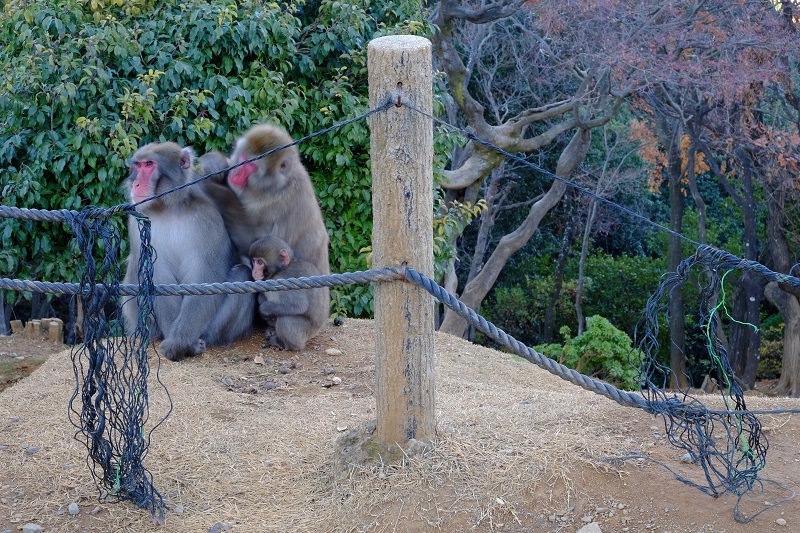
Photo by Japanforeveryone.com
Practical information
| Show location on Google Maps | |
| Official website |
|
| 9:00-16:30 Last admission 30 minutes before closing |
|
| Closed in case of heavy rain or snow | |
| 550 Yen | |
| 15 minutes’ walk from Keifuku Arashiyama Station 25 minutes’ walk from JR Saga-Arashiyama Station 15 minutes’ walk from Arashiyama bus stop (lines 11, 93) |
Saga-Toriimoto Road
The Saga-Toriimoto Road in Arashiyama is a charming stretch of road that seems frozen in time. This ancient paved path is lined with traditional wooden houses, craft shops and small restaurants offering local specialities. Walking along this street, one can admire the historical architecture and immerse oneself in the traditional atmosphere of Kyoto. During the cherry blossom season, Saga-Toriimoto Road is transformed into a tunnel of pink petals, creating an incredibly impressive spectacle. It is the ideal place to immerse yourself in the authentic charm of Arashiyama and enjoy a truly traditional Japanese experience.
663highland, CC BY-SA 3.0, via Wikimedia Commons
Practical information
| Show location on Google Maps | |
| 15 minutes’ walk from the Saga Shakadomae bus stop (routes 28 and 91) |
Rakushisha Residence
The Rakushisha Residence in Arashiyama is a historic house that was the residence of a 17th century Japanese poet. This Japanese-style mansion is an example of the elegance and minimalism that characterises traditional Japanese architecture. The house is set in a garden of bamboo and trees, where every detail has been carefully designed to create an atmosphere of tranquillity and inspiration. This residence is open to visitors and it is possible to visit the room where the poet created his works, admiring the view of the garden and the surrounding landscape. The Rakushisha Residence is a hidden treasure of Arashiyama and a perfect place to immerse yourself in traditional Japanese aesthetics.
663highland, CC BY-SA 3.0, via Wikimedia Commons
Practical information
| Show location on Google Maps | |
| Official website |
|
| 9:00-17:00 (March to December) 10:00-16:00 (January to February) |
|
| 31 December to 1 January | |
| 250 Yen | |
| 10 minutes’ walk from the Saga Shakadomae bus stop (routes 28 and 91) |
The Sagano Tourist Railway is a unique experience to explore the natural beauty of Arashiyama. This picturesque railway takes you on an enchanting journey through the magnificent hills and bamboo forests of this region. Aboard traditional steam-powered carriages, passengers can admire breathtaking scenery, such as the Hozu River and the surrounding mountains. It is an opportunity to relax and enjoy the view as the train meanders through tunnels, bridges and scenic curves. The Sagano Tourist Railway is a must for lovers of nature and picturesque train journeys.
pang yu liu from Taoyuan, TW, CC BY-SA 2.0, via Wikimedia Commons
Practical information
| Show location on Google Maps | |
| Official website |
|
| One train every hour 9:00-16:00 (until 17:00 on days with more tourists) | |
| Wednesdays (except for national holidays, during spring and summer holidays. During autumn foliage) 30 December to the end of February |
|
| 880 Yen for a one-way ticket from Torokko Saga to Torokko Kameoka | |
| 1 minute walk from JR Saga Arashiyama Station Saga Arashiyamaeki-mae bus stop (lines 11, 91, 93) |
Boat tours on the Hozu River
A boat tour on the Hozu River is an unforgettable experience for nature lovers. As the river flows peacefully, passengers can admire the beauty of Arashiyama and the surrounding mountains. Along the way, there are several opportunities to take spectacular photographs of this beautiful landscape. In addition, the boat guide will share information about the local flora and fauna. The tour takes place both during the day and at night, but the magic of the night-time experience, with the gas lighting of paper lanterns bouncing on the water, is a must for anyone visiting Arashiyama.
No machine-readable author provided. Gakuro assumed (based on copyright claims)., CC BY-SA 3.0, via Wikimedia Commons
Practical information
| Show location on Google Maps | |
| Official website |
|
| 9:00-15:30 (from 10 March until November, departures every hour) 10:00-14:30 (December to 9 March, departures every 90 minutes) On high season days, boats depart at irregular times depending on demand |
|
| 29 December to 4 January and some days for maintenance When there is bad weather and when the water level is very high |
|
| 4100 Yen (without reservation, tickets can be purchased at the boat departure point) | |
| 10 minutes walk from JR Kameoka Station (400 Yen from Kyoto Station) or by bus (160 Yen) By bus from Torokko Kameoka Station (300 Yen) |




